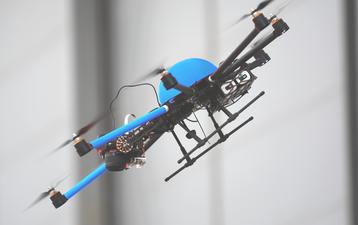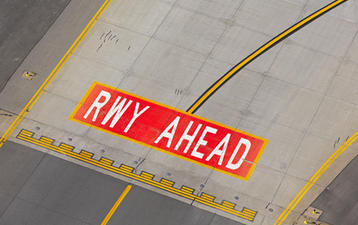Airfield Pavement Inspections using drones
Hamburg Finkenwerder Aerodrome
Airbus Operations division, the aerodrome operator, commissioned airsight to conduct an inspection of the main apron area using drones / Unmanned Aerial Vehicles (UAVs) / Remotely Piloted Aircraft Systems (RPAS) in order to assess the general feasibility of such new inspection methods in conjunction with operations, and assess their benefits for their utilisation on the entire movement area.
Inspection Flights
The inspections were carried out in coordination with air traffic control on the main apron located south of the runway, representing a surface of 130 000 square meters of concrete pavement: the equivalent surface of 18 football fields.
airsight’s UAV, manoeuvring in windy conditions along pre-programmed GPS-based flight segments with a minimum distance of 150m to the runway and 10m to parking aircraft, could gather the required image material for the detailed off-site analysis of the pavement surfaces.
Orthophoto generation
All images – representing 45 gigabyte of raw material – were then stitched into one single georeferenced orthophoto. This process took four days on airsight server-grade hardware and dedicated software. The resulting image had a resolution of 2mm/pixel: about 15 times better than typical high-end aerial imagery obtained by low-flying aircraft, or about 500 times better than images obtained by satellites for civilian use.
Assessment and documentation
The accuracy of the image material enabled a detailed assessment and documentation of the conditions of the airfield pavement. This task, performed by airsight experts using a CAD software, enabled the identification of distresses in accordance to client’s or industry-recognised standard such as ASTM D 5340 (Standard Test Method for Airport Pavement Condition Index – PCI – Surveys).
Benefits
For this project, the utilisation of UAV for pavement inspections had numerous benefits in comparison to conventional inspections: a minimal impact on airport operations, a standardised and efficient off-site analysis, a full reproducibility and traceability of the visual impression as well as the corresponding results over time – not dependent on the subjectivity of the surveyors.
More generally, the provision of such image material and associated reports unveils a wide range of new applications for airport operators and their maintenance team: optimised asset management using Geographical Information System (GIS) application and Pavement Management Systems (e.g. MicroPAVERtm), off-site quantification of rehabilitation measures, etc.
Key Facts



